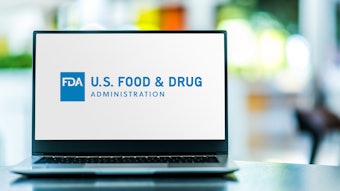Cosmetic formulators have to be aware of the dual approach in Europe toward the safety of cosmetic ingredients. This involves an individual safety evaluation, which is performed by product manufacturers on those ingredients with no regulatory restrictions imposed. Under the old Cosmetics Directive 76/768/EEC, this safety assessment followed the principles described in the earlier editions of the “Notes of Guidance for Testing of Cosmetic Ingredients and Their Safety Evaluation by the SCCS,” recently published in its 7th edition. The new Cosmetics Regulation (EC) No. 1223/2009 brought no further requirements; however, it defined the format of the Cosmetic Product Safety Report (CPSR) in the Regulation’s Annex I. Accordingly, the information for documenting the product’s safety is to be listed in a part A of the CPSR, and this needs to include the toxicological profiles of the ingredient substances, their physical and chemical characteristics, impurities, trace components, as well as their exposure criteria in use. In part B of the CPSR, the final cosmetic product safety assessment needs to be detailed. Additional guidelines on Annex I, as required by Article 10 of the Cosmetics Regulation, are under development within the European Commission’s sub-group on Annex I consisting of EC members and stakeholders. The document is expected to be released by the end of 2011.
The now legally stipulated format of the CSPR applies to all cosmetic products sold in the EU and has to be implemented by July 11, 2013. Included are also those products that were already introduced under the provisions of the Cosmetics Directive. In order to comply with the new format, it may be necessary for manufacturers to conduct adaptations to their existing CPSRs. The general view of safety assessors in the cosmetics industry is that no issues from the Cosmetics Regulation will arise for those who did the assessments diligently while meeting the requirements of the Cosmetics Directive. However, for those who did not or never conducted a safety assessment before, the CPSR will be a challenge.
A safety evaluation of cosmetic ingredients according to the SCCS’ standards is based upon the principles and practice of the risk assessment process developed within the World Health Organization, the United Nations Environment Programme and the International Labour Organization’s (WHO/UNEP/ILO) International Program on Chemical Safety. The need for certain data and test results to be provided is inherent in these internationally agreed general processes, and thus applies in the CPSRs. Similarly contained is the principle of taking the profile of the ingredients into consideration for the assessment with the existing rationale that the safety of a product is based on the safety of its ingredients. Accordingly, the risk assessment involves four steps: hazard identification, a dose response assessment, an exposure assessment and the risk characterization. The approach as requested in Article 10 of the Cosmetics Regulation is an appropriate weight-of-evidence (WoE) assessment. WoE refers to using and integrating evidence from all existing sources, where the information from each of the sources individually may have been regarded as being insufficient. Where there is sufficient WoE, further testing may be omitted.
During product development, all parties involved, i.e., formulators, ingredient buyers and safety assessors, should work closely together. The safety assessor determines the relevancy of the assessment elements as well as on the final conclusions about the safe use of the ingredients and of the overall safety of the cosmetic product. It is the assessor’s skills and knowledge that produce the proper judgment on completeness and adequacy of all information available. In view of the complexity of the assessment processes, the necessary credential of a safety assessor is a diploma or similar degree of having completed a university course of studies in either pharmacy, toxicology, medicine or a similar discipline. These requirements on the educational background are specified in Article 10 of the Cosmetics Regulation. Stakeholder groups consider additional interdisciplinary skills on chemistry, toxicology, dermatology and regulatory as essential and provide advanced training courses. Information on these can be found on the websites of the Deutsche Gesellschaft für Wissenschaftliche und Angewandte Kosmetik e.V. (DGK) and of the EU Commission.
The steps of the assessment processes include the ingredients’ detailed characterization through chromatograms, spectra and specifications, etc., and the establishment of a reliable and adequate toxicological profile with a sufficient margin of safety. Data requirements include chemical identity, physical form, molecular weight, characterization and purity of the chemical, characterization of the impurities or accompanying contaminants, solubility, partition coefficient, additional relevant physical and chemical specifications, homogeneity and stability, as well as function and uses. Therefore, of fundamental importance is a good cooperation with the ingredient suppliers. Additional guidance on the necessary data exchange is provided by trade associations, e.g., the European Federation for Cosmetic Ingredients. A toxicological profile for the ingredients should address at a minimum the end points of acute toxicity, skin and eye irritation, sensitization, and in the case of UV absorption photo-induced toxicity. In a WoE approach, results from in vitro and in vivo toxicological tests as well as from in silico approaches like Quantitative Structure Activity Relationships (QSAR) can be used and additionally, information from dermatological tests, post-market surveillance, literature, etc. The fragrance industry is providing supportive information such as safety testing and risk assessment data through the Research Institute for Fragrance Materials (RIFM) as well as the International Fragrance Association’s (IFRA) standards. Endpoint data for many substances will result from the activities within the EU’s chemical framework REACH; however, not all cosmetic ingredients fall under the registration requirements. When using data from in vivo tests, the animal testing bans have to be taken into consideration; a practical approach towards the use was provided in the EU Regulatory Update “Tackling the Animal Testing Ban, from May 2010.” The risk characterization, i.e., the probability of a substance causing damage to human health, and the level of risk is evaluated as Margin of Safety (MoS). A MoS >100 is seen as assuring the safety in use of a substance. Alternative approaches for risk characterization can be used, e.g., data from human intake, WoE or Threshold of Toxicological Concern (TTC).
After the characterization of the product ingredients, the overall product safety assessment requires the risk assessment of the finished cosmetic product. This includes product stability testing and may also involve tests on humans that need to be based on distinct scientific and ethical requirements, as provided by the World Medical Association and through the EU's Good Clinical Practice Compliance. Specific aspects for human volunteer compatibility studies on finished cosmetic products are described in the guidance documents SCCNFP/0068/98 and SCCNFP/0245/99.
Another important aspect for the safety of the finished cosmetic product is the microbiological quality. In the Notes of Guidance, the necessity to perform a microbiological analysis for each batch of the finished product is requested and rationalized. The safety assessors' view is that attention should be paid to substances and mixtures that are susceptible to microbiological contamination, e.g. water-based mixtures, protein-rich materials and plant or animal raw materials. However, for products with a low microbiological risk—i.e. products with >20% alcohol content, products based on organic solvents or high/low pH products—neither a preservation challenge test nor a microbiological quality test in the finished product are considered necessary. The parameters examined, the criteria and methods used, the results per batch and, if applicable, the reasoning for non-inclusion of microbiological data have to be included in the CPSR’s part B.






!['I think the biggest game-changer about [MoCRA's] ... requirement for GMPs is how it changes what it means to be adulterated,' Brandi Reinbold, senior manager of global certification for NSF International, said in this sponsored videocast. Register now to watch and learn more. It's free.](https://img.cosmeticsandtoiletries.com/files/base/allured/all/image/2023/11/NSF_Intl_Thumbnail.6554efdc29816.png?auto=format%2Ccompress&fit=crop&h=191&q=70&rect=275%2C70%2C1328%2C748&w=340)



